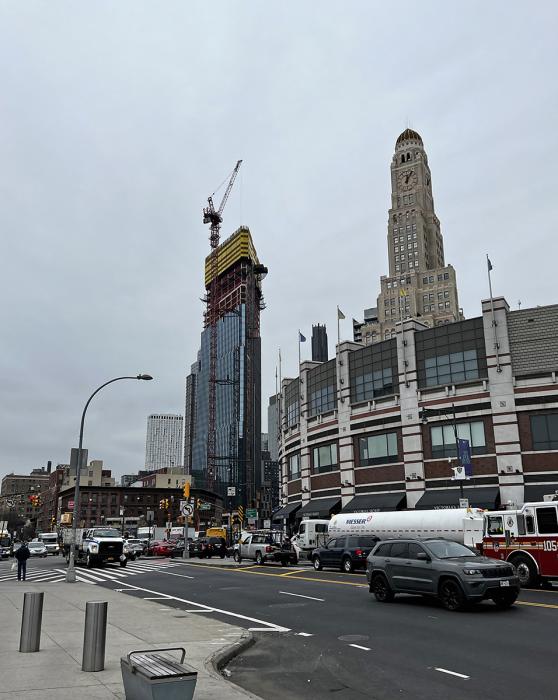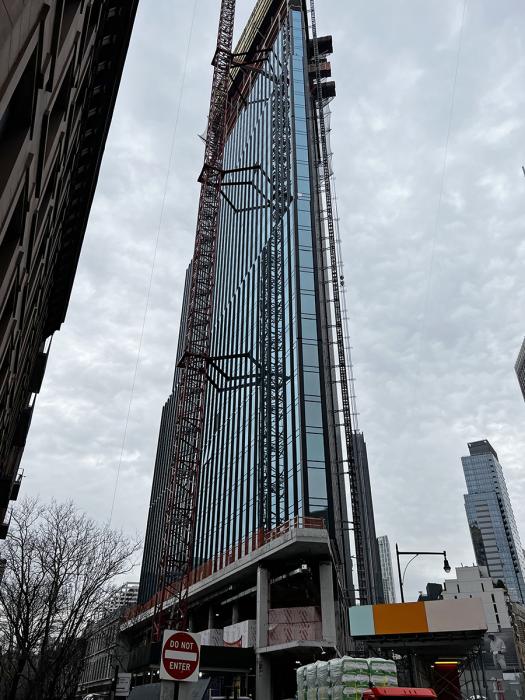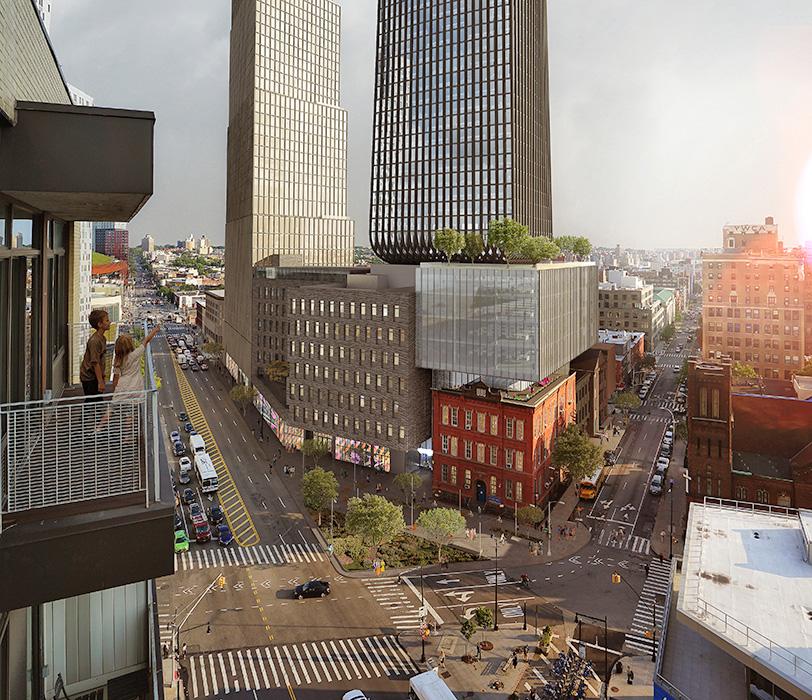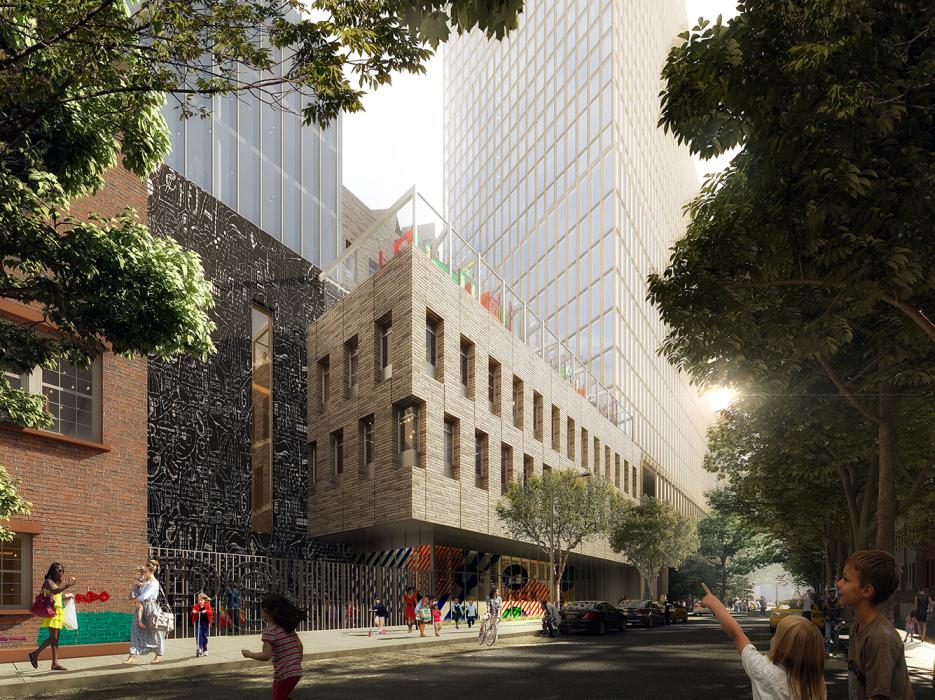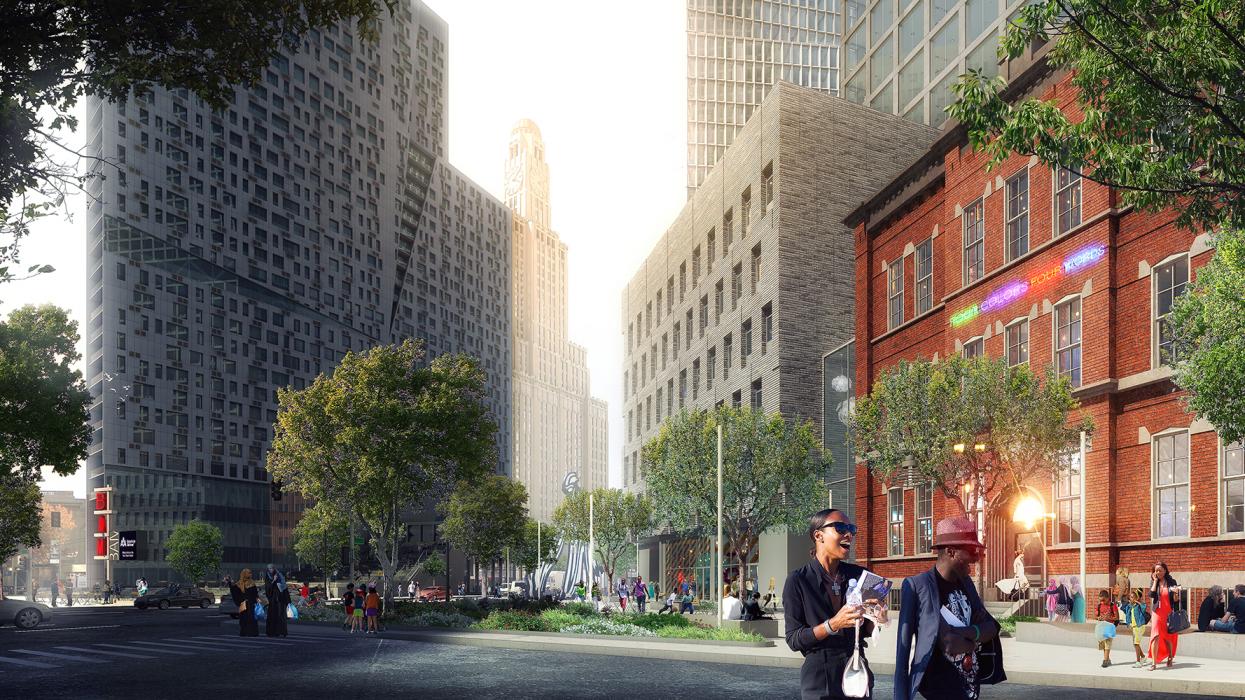
The Alloy Block, Downtown Brooklyn
Set to include New York City's first all-electric residential tower, the development fosters a connection to place while planning for future decarbonization.
the challenge
The revitalization of Brooklyn’s Boerum Hill neighborhood paved the way for The Alloy Block, a mixed-use redevelopment that includes the borough’s and the city’s first all-electric residential tower.
Comprising a cluster of eight structures, old and new, the block will eventually offer 850 new homes including affordable housing, a mixed-use commercial office tower, a cultural center, the city’s first Passivhaus certified public school and the relocated and upgraded Khalil Gibran International Academy.
We’re providing architect/developer Alloy Development LLC with sustainability consulting services for the ambitious project. Plans for the recently completed residential tower, 505 State Street, were based on three goals: foster a connection to place, improve energy efficiency and plan for future decarbonization.
Here's how
The 44-story 505 State Street tower is part of the first phase of the 1-million-square-foot mixed-use development and offers 440 market-rate and affordable residential units while setting a city-wide benchmark for sustainability: The all-electric building will serve as a net-zero ready building, and once the City's electricity grid moves to renewable energy sources, the building will operate with net-zero carbon emissions.
Sustainable inside and out
When the project began, we knew that electric heating technology had a way to go before it became affordable and more efficient. We also knew that electricity serving the project was generated mainly from natural gas, which produces greenhouse gas emissions when burned.
We worked with Alloy Development LLC, energy company ConEd, New York State Energy Research and Development Authority (NYSERDA), and façade and MEP partners to understand what was possible, and which measures we could evaluate for future implementation. ConEd is committed to decarbonize the New York City electricity sub-grid by 2040. Therefore, by prioritizing the long-term goal of decarbonization, 505 State Street was designed to operate at zero emissions by 2040.
We focused first on reducing energy loads of the building, then on electrifying the building systems to eliminate onsite fossil fuel usage. Energy modeling helped us find the parameters that were most important to reduce the heating and cooling loads as much as possible. We modeled the impacts of thousands of inputs, including simulated façade performance values, infiltration rates and ventilation recovery effectiveness. These models showed which combination of variables yielded the lowest heating load. Our process turned conventional energy modeling on its head by choosing an output aligned with our desired performance goals and working backwards to identify inputs to hit the target.
"Through the development process, we redefined the future of responsible building in Brooklyn. This was achieved through extensive collaboration among Alloy, Thornton Tomasetti's sustainability team, city agencies, as well as the local community."
Finding compromise in institutions
We began work on the project in 2016 when Passivhaus was still a relatively new standard and required a push in market innovation to achieve certification. While the German Passivhaus standard is now common in parts of Europe, this project aims to be the first Passivhaus public school in New York City. Currently the project is Design Certified, based on efficiency measures like triple-pane windows, continuous façade and roof insulation, minimization of thermal bridges and highly efficient mechanical systems that feature the use of heat pumps.
One element that made the design particularly difficult was the cafeteria's kitchen process loads, which made it difficult to achieve the target energy use intensity (EUI). With all of the kitchen equipment, the modeled EUI was 45.44 kbtu/sf/year, but the project needed to achieve a lower EUI closer to 39.88 kbtu/sf/year. The Passivhaus standard the project used was created primarily based on building loads of conventional office or residential equipment and didn’t include extra allowances for process loads, which, in this case, included specialized equipment for kitchens.
We took an active role negotiating with Passivhaus Institut in Germany to see how this project could move forward with these constraints. We discussed including a process load allowance aligned with commercial kitchen uses or changing the standard itself to include these process loads. Through working with the certifier to arrive at a protocol for handling the cafeteria kitchen process loads, the project was ultimately granted an increased allowance for them. The next phase of the project is to undergo performance testing to close out certification.
Results
The Alloy Block is paving the way for a sustainable future in tandem with a community-first approach. The development has achieved LEED for Cities and Communities Gold certification, which recognizes the block’s sustainability and efficiency as an integral part of the neighborhood.










